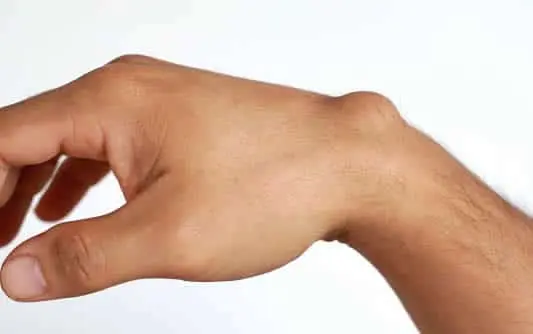Understanding Cysts
A cyst is a sac filled with fluid that forms just beneath the skin’s surface. They are common and typically benign.
- They may present as yellow or white.
- Some may have a dark plug that, when squeezed, releases pus.
- Sizes can vary, ranging up to a few centimeters wide.
While generally painless, cysts can become tender if infected.
These cysts develop due to the skin’s production of keratin, which sometimes accumulates and forms a sac beneath the skin’s surface.
Cysts can affect anyone but are more likely after puberty, in individuals with acne, or those with damaged hair follicles. It’s important to note that they are not contagious.
Spontaneous Resolution of Skin Cysts
Most cysts resolve on their own unless they become infected. Signs of infection include continued growth, pain, and inflammation.
While typically harmless, attempting to burst a cyst can lead to infection. Consultation with a doctor or dermatologist is recommended if infection is suspected.
Understanding Lesions
Skin lesions can result from skin injury or damage, altering the skin’s appearance. They can occur anywhere on the body.
- Flat marks differing in color from surrounding skin.
- Raised bumps.
- Fluid-filled blisters.
- Raised bumps containing pus or white fluid.
Various factors contribute to their development, including sunburn, allergies, injuries, infections, and underlying medical conditions.
While lesions may itch, swell, or cause pain, these symptoms don’t necessarily indicate infection. Seek medical attention if a lesion grows, causes severe pain, bleeds, or fails to heal.
Contagion and Treatment of Skin Lesions
The contagiousness of skin lesions depends on their cause. Viruses and bacteria can spread, causing similar lesions. Treatment varies based on the cause, with options including topical or oral medications and, in some cases, surgery.
Consultation with a doctor is essential for proper treatment.
Understanding Lipomas
Skin lipomas are soft, fatty lumps beneath the skin’s surface, typically painless, and characterized by:
- Soft, ‘doughy’ texture.
- Variable sizes, ranging from pea-sized to several centimeters wide.
- Minimal movement when pressed.
- No associated pain.
- Slow growth rate.
- Matching skin tone in color.
They result from an overgrowth of fat cells, with a higher risk in individuals with a family history of lipomas. While they can occur anywhere on the body, they’re commonly found on the neck, shoulders, arms, and thighs.
Assessing the Risk of Cancer in Lipomas
Lipomas are non-cancerous growths, but monitoring for changes is essential. Treatment may involve steroid injections or surgical removal if necessary.
Understanding Skin Tags
Skin tags are small, skin-colored growths commonly found in areas such as the neck, armpits, groin, under the breasts, and eyelids. They can grow up to 5cm wide and may vary slightly in color.
While often harmless, they may require treatment if they impact self-confidence or catch on clothing or jewelry.
Interpreting Skin Tags and Cancer Concerns
Skin tags are typically benign but should be evaluated by a dermatologist if they change in size or color.
Distinguishing Characteristics of Cysts, Lesions, Lipomas, and Skin Tags
Several distinctions exist among these conditions, including their appearance, location, and contagiousness. While lesions may be contagious, cysts, lipomas, and skin tags typically are not.
Knowing When to Seek Dermatological Care
If concerned about skin growths, seek medical evaluation. Signs of infection or changes in size or color warrant immediate attention.
Understanding your skin growths helps determine whether medical intervention is necessary.
Schedule a appointment with Dr. In Northridge


